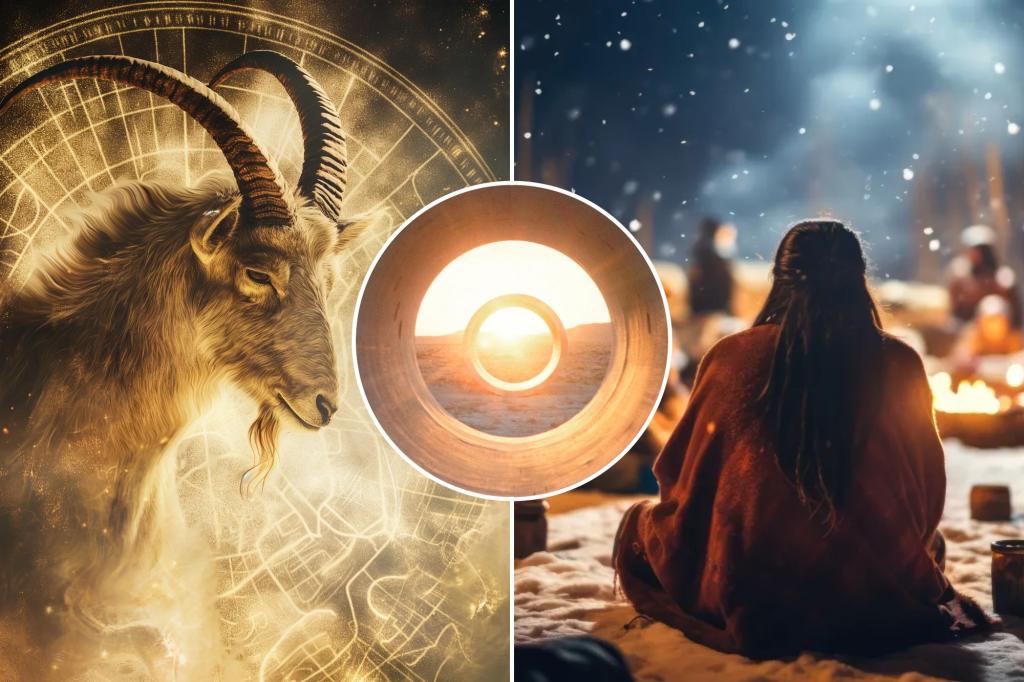The winter solstice, the astronomical event marking the shortest day and longest night of the year in the Northern Hemisphere, holds deep significance across cultures and spiritual traditions. It occurs when the Sun reaches its lowest point relative to the celestial equator, directly above the Tropic of Capricorn. This “standing still” of the Sun, as the Latin roots of the word solstice suggest, signifies a turning point, a moment of pause before the gradual return of light and the lengthening of days. The winter solstice has been observed and celebrated for millennia, representing not only a change in the natural world but also a time for introspection, reflection, and the anticipation of renewal.
The winter solstice’s astronomical significance lies in the Earth’s axial tilt. As Earth orbits the Sun, its tilted axis causes one hemisphere to lean towards the Sun, experiencing summer, while the other leans away, experiencing winter. The solstice occurs when the tilted axis is at its maximum angle away from the Sun. For the Northern Hemisphere, this means the Sun’s rays strike the Earth at a more oblique angle, resulting in less direct sunlight and shorter days. Conversely, the Southern Hemisphere experiences its summer solstice at this time. This astronomical phenomenon governs the cyclical nature of seasons, influencing weather patterns, agricultural practices, and even cultural celebrations worldwide.
Historically, the winter solstice has been imbued with profound spiritual meaning. Many cultures viewed it as a time of rebirth, a symbolic death and resurrection of the sun. Ancient civilizations recognized the solstice’s crucial role in the cycle of life and death, associating it with themes of darkness and light, decay and renewal. Stonehenge, the prehistoric monument in England, stands as a testament to the importance of the solstice to ancient peoples, its stones aligned to mark the sunrise on the winter solstice. Festivities and rituals, often involving fire and light, were common practices, symbolizing the return of the sun and the promise of spring.
The pagan festival of Yule offers a fascinating glimpse into the historical and cultural significance of the winter solstice. Far from the commercialized Christmas we know today, Yule was a time of both celebration and apprehension. Myths and legends, such as Odin’s Wild Hunt, reflected the anxieties associated with the darkest time of the year. The Wild Hunt, a spectral procession led by the Norse god Odin, served as both a cautionary tale and a source of awe. Over time, elements of Yule traditions, including the symbolic use of evergreen trees and mistletoe, were incorporated into Christmas celebrations, creating a fascinating blend of pagan and Christian practices.
The winter solstice also holds astrological significance, marking the beginning of Capricorn season. Capricorn, an Earth sign known for its practicality and ambition, encourages reflection on long-term goals and legacies. The solstice becomes a time to consider not only personal achievements but also one’s impact on the world and future generations. It is a period for setting intentions, for evaluating past actions and planning future endeavors. This astrological perspective adds another layer of meaning to the winter solstice, encouraging individuals to connect with their inner selves and contemplate their place within the larger tapestry of existence.
In contemporary society, the winter solstice continues to resonate, offering a moment of pause in the busy holiday season. It is a time for introspection, for connecting with loved ones, and for appreciating the cyclical nature of life. Regardless of individual beliefs or cultural backgrounds, the winter solstice serves as a potent reminder of the interconnectedness between humanity and the cosmos. It is an invitation to embrace the darkness, to honor the past, and to welcome the returning light with hope and anticipation. The simple act of lighting a candle can become a symbolic gesture, acknowledging the power of light and the promise of renewal inherent in the turning of the year.

